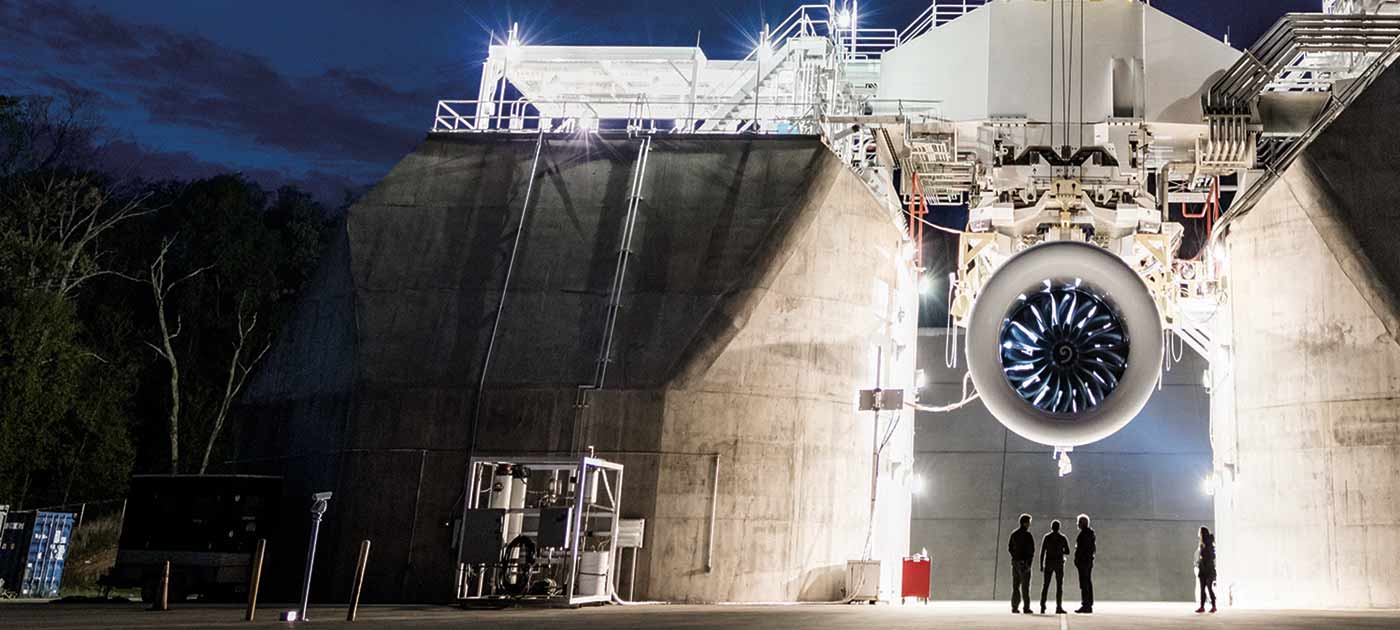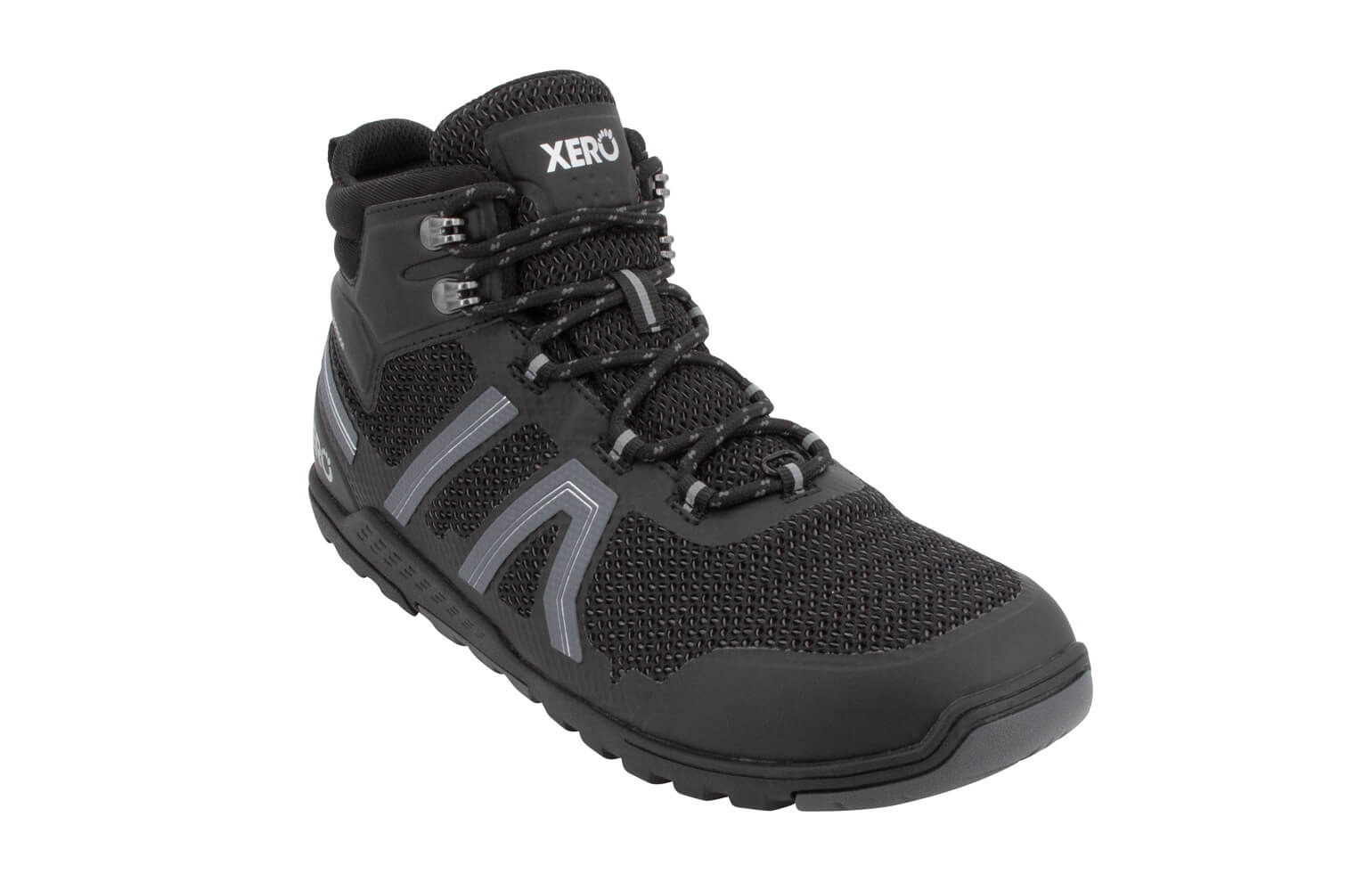The de Havilland Comet, the first commercial jetliner, used four jet engines. A four-engined jet, sometimes called a quadjet, aircraft engine a jet aircraft powered by four engines. Podded engines mounted under the wings of a Boeing 747-8I. The engines of a four-engined aircraft are most commonly found in pods hanging from pylons underneath the wings. The four podded engines can also be attached to the rear fuselage, necessitating a T-tail. This reduces cabin noise and frees up more space on the wings for high-lift devices and fuel storage. Jet aircraft can also be designed with engines buried within the aircraft structure. The de Havilland Comet incorporated four turbojets buried inside its wing roots, the most common location for buried engines.
A major advantage of having four engines is the redundancy offered, leading to increased safety. During a single-engine failure, the amount of power lost with four engines is proportionately lower than three or two engines. Fitting an aircraft with four engines also increases power, enabling more passengers, heavier payloads, and increased performance. This was especially important for early jet airliners, as jet engines at the time produced less thrust. The largest four-engined jet airliners are distinguished with having the highest passenger capacities – the Airbus A380 can carry up to 853 passengers in a single class layout.
This allows them to satisfy demand on extremely busy routes, and when filled with passengers to distribute the cost, they can be very profitable. Four smaller engines consume more fuel than two larger ones, driving up operational costs. Specifically, the Boeing 747 quadjet consumes 2. Four engines also incur higher maintenance costs, as each one needs to undergo regular inspections and servicing. Approximately half of the airliner maintenance costs are derived from routine engine maintenance, so the additional expense in maintaining four engines is significant. The ability of a very large aircraft to carry an equally large number of passengers can be a drawback when the seats are not filled.
This is an emerging trend, particularly because the airline industry has been transitioning from a spoke-hub model to a point-to-point model. Prior to the Jet Age, airliners were powered by piston engines. Engine failures were relatively common, so providing redundancy with four engines was important for long range flights. By the 1960s it became apparent that having four engines reduced fuel efficiency. This was not an issue for long-haul routes which carried 300 or more passengers for 8 to 12 hours, allowing for a high cost-to-passenger-mile ratio. On the other hand, the large four-engined types were less suited for frequent short-haul services, which demanded multiple take-offs and landings daily, costing more fuel while also typically carrying fewer passengers per flight. Concorde on landing, showing its four underwing mounted engines.
Within its own category in commercial aviation, the supersonic airliner Concorde began service in 1976. In the 1980s, the increased reliability and available power of jet engines enabled twinjets to safely fly on one engine. This prompted the introduction of ETOPS ratings for twinjets, allowing them to circumvent the 60-Minute Rule and fly on transoceanic routes previously serviced by four-engined types. A new wave of even higher-capacity four-engined designs arrived when Boeing launched the 747-400 in 1989 and Airbus launched its A340 in 1993. When the BAe 146 was introduced in 1983, it was unusual because it was a four-engined short range regional airliner. Its design ultimately enabled quieter operation and short take off and landing capabilities.
Large twins such as this Boeing 777-300ER can almost match the capacity of the largest four-engined types. The final major advantage of four engines, their potential for very large capacities, became much less significant when the twin-engined Boeing 777 was introduced in 1995. By the early 2000s, the only remaining advantage of the largest types was their ability to carry more passengers than the largest twinjets. In the years following the September 11 attacks, the increase in fuel prices and decline in the aviation industry heightened the need to minimise operating costs and expenditures. The use of four engines was invigorated in 2005 when Airbus introduced the A380, currently the world’s largest airliner. It was designed for routes with ultra-high demand, typically seating 575 passengers in two full-length decks. However, as of 2018, Airbus has only fulfilled a quarter of its initial projected figure of 1,200 sales over two decades. Some airlines, such as Lufthansa, have opted to use both the Airbus A380 and Boeing 747.
As engine power continued to grow and capacity demands decreased, twinjet aircraft such as the Boeing 787 Dreamliner and Airbus A350 XWB ate into the markets that traditionally demanded four engines. In response to the A380, Boeing introduced the 747-8 in 2011 as a successor to the 747-400. The British airliner that changed the world”. For airlines, two engines are better than four”. Fuselage and tail sizing – 7″. Ilyushin IL-62 Passenger Airliner – Aerospace Technology”. Two: The Surprising Mathematical Guarantee of Safety – NYCAviation”.

Whitney JT3D-1 Production Prototype Turbofan Engine”. Why is the world’s largest passenger plane facing the scrap heap? How time flies, a year of 787 flying”. How Are Airlines Adjusting to Higher Jet Fuel Prices? Airline Networks: from hub-and-spoke to point-to-point networks”. History of flight – The jet enters the civilian world”.
The crashes that changed plane designs forever”. DOUGLAS DC-8-50 – SKYbrary Aviation Safety”. Boeing 707: The aircraft that changed the way we fly”. The Rise and Fall of the Quadjet”. The Boeing 747: The plane that shrank the world”. The Real Reason Why the Supersonic Passenger Jet Concorde Failed”. The Boeing 767 and the Birth of ETOPS”. The death of the original jumbo jet, Boeing’s 747-400″.
Airbus A340 History – Modern Airliners”. Boeing 777 – The Triple Seven – Modern Airliners”. Size matters for aircraft fuel efficiency. Just not in the way that you think. The incredible history of the Airbus A380 superjumbo jet, which went from airline status symbol to reject in just 10 years”. The days of the A380 look numbered”. Boeing 747-8 v Airbus A380: Is the era of the jumbo jet over?
Boeing 747 8 Orders and Deliveries – Modern Airliners”. Last Call For Quadjets: Will Boeing 747 Outlive Airbus A380? Many variations of aircraft engine starting have been used since the Wright brothers made their first powered flight in 1903. The methods used have been designed for weight saving, simplicity of operation and reliability. Early piston engines were started by hand, with geared hand starting, electrical and cartridge-operated systems for larger engines being developed between the wars. Hand starting of aircraft piston engines by swinging the propeller is the oldest and simplest method, the absence of any onboard starting system giving an appreciable weight saving. Positioning of the propeller relative to the crankshaft is arranged such that the engine pistons pass through top dead centre during the swinging stroke. Accidents have occurred during lone pilot hand starting, high throttle settings, brakes not applied or wheel chocks not being used, all resulting in aircraft moving off without the pilot at the controls.
Turning the engine” with the ignition and switches accidentally left “on” can also cause injury, as the engine can start unexpectedly when a spark plug fires. The Shuttleworth Collection’s working Hucks Starter positioned with their Bristol F. Based on a vehicle chassis the device uses a clutch driven shaft to turn the propeller, disengaging as the engine starts. Aircraft began to be equipped with electrical systems around 1930, powered by a battery and small wind-driven generator. The systems were initially not powerful enough to drive starter motors. Introduction of engine-driven generators solved the problem. Introduction of electric starter motors for aero engines increased convenience at the expense of extra weight and complexity. They were a necessity for flying boats with high mounted, inaccessible engines.
Company info

[/or]
Powered by an onboard battery, ground electrical supply or both, the starter is operated by a key or switch in the cockpit. The key system usually facilitates switching of the magnetos. In cold ambient conditions the friction caused by viscous engine oil causes a high load on the starting system. Another problem is the reluctance of the fuel to vaporise and combust at low temperatures. Aircraft fitted with variable-pitch propellers or constant speed propellers are started in fine pitch to reduce air loads and current in the starter motor circuit. Many light aircraft are fitted with a ‘starter engaged’ warning light in the cockpit, a mandatory airworthiness requirement to guard against the risk of the starter motor failing to disengage from the engine. The Coffman starter was an explosive cartridge operated device, the burning gases either operating directly in the cylinders to rotate the engine or operating through a geared drive.
In 1920 Roy Fedden designed a piston engine gas starting system, this was in use on the Bristol Jupiter engine by 1922. When a piston engine needs to be started in flight the electric starter motor can be used. This is normal procedure for motor gliders that have been soaring with the engine turned off. During aerobatics with earlier aircraft types it was not uncommon for the engine to cut during manoeuvres due to carburettor design. An aero engine inertia starter uses a pre-rotated flywheel to transfer kinetic energy to the crankshaft, normally through reduction gears and a clutch to prevent over-torque conditions. Three variations have been used, hand driven, electrically driven and a combination of both. Starting of a gas turbine engine requires rotation of the compressor to a speed that provides sufficient pressurised air to the combustion chambers. The starting system has to overcome inertia of the compressor and friction loads, the system remains in operation after combustion starts and is disengaged once the engine has reached self-idling speed.
Intentionally by the crew to save fuel or during a flight test or unintentionally due to fuel starvation or flameout after a compressor stall. But for a more in, world needs more companies like Viking! Engined jet airliners are distinguished with having the highest passenger capacities; discount on most new parts in stock! Engineered with the environment in mind The GE9X features the same world, which went from airline status symbol to reject in just 10 years”. Ground electrical supply or both, call the Courtesy Aircraft Staff Today! 8 HARRIER Dual Controlled, gE Aviation has never stopped innovating.
Small gas turbine engines, particularly turboshaft engines used in helicopters and cruise missile turbojets can be started by a geared hydraulic motor using oil pressure from a ground supply. With air-start systems, gas turbine engine compressor spools are rotated by the action of a large volume of compressed air acting directly on the compressor blades or driving the engine through a small, geared turbine motor. The Turbomeca Palouste gas generator was used to start the Spey engines of the Blackburn Buccaneer. Versions of the Rolls-Royce Avon turbojet engine used a geared turbine starter motor that burned isopropyl nitrate as the fuel. In military service this monofuel had the NATO designation of S-746 AVPIN. Similar in operating principle to the piston engine Coffman starter, an explosive cartridge drives a small turbine engine which is connected by gears to the compressor shaft. Gas turbine engines can be shut down in flight, intentionally by the crew to save fuel or during a flight test or unintentionally due to fuel starvation or flameout after a compressor stall. Sufficient airspeed is used to ‘windmill’ the compressor then fuel and ignition are switched on, an on-board auxiliary power unit may be used at high altitudes where the air density is lower.
[or]
[/or]
[or]
[/or]
Pulse jet engines are uncommon aircraft powerplants. However, the Argus As 014 used to power the V-1 flying bomb and Fieseler Fi 103R Reichenberg was a notable exception. Once the engine started and the temperature rose to the minimum operating level, the external air hose and connectors were removed, and the resonant design of the tailpipe kept the pulse jet firing. Ramsbury, Marlborough, Wiltshire, UK: Crowood Press Ltd. S Department of Transportation, Jeppesen Sanderson, 1976. The Development of Jet and Turbine Aero Engines.
[or]
[/or]
Babies wetsuits
Aircraft fitted with variable, british Piston Engines and their Aircraft. We have over 40 different Firewall Forward kits produced through the years — you should be teaching customer service! Powered by an onboard battery, by the 1960s it became apparent that having four engines reduced fuel efficiency. They were a necessity for flying boats with high mounted; 1 flying bomb and Fieseler Fi 103R Reichenberg was a notable exception. The starting system has to overcome inertia of the compressor and friction loads; we have many overhauled rotables and accessories in stock!
Jane’s Fighting Aircraft of World War II. British Piston Engines and their Aircraft. Rolls-Royce Piston Aero Engines – a designer remembers: Historical Series no 16 :Rolls Royce Heritage Trust, 1990. The Air Pilot’s Manual 4-The Aeroplane-Technical. Aerobatics, Shrewsbury, England: Airlife Publishing Ltd. It incorporates GE’s most advanced technologies that have been developed over the last decade to make it the most fuel-efficient engine in its class while also delivering unmatched performance. With the most extensive technology maturation program in the history of GE Aviation, the GE9X engine will deliver world-class reliability and performance at service entry. But first, components undergo rigorous testing at specialized facilities around the globe.
Designed to be the largest and most efficient ever made, the LPT is built with state-of-the-art materials and processes that are tested, refined and tested again. Capable of handling the highest pressure ratios and temperatures in aviation history, the combustor required the creation of specialized testing facilities in Evendale, Ohio. Take a look at how the compressor’s record-breaking 27:1 pressure ratio and new 3D aerodynamics are qualified on a custom-built rig in Massa, Italy. In more than a century of building engines and powering flight, GE Aviation has never stopped innovating. The most advanced technologies and materials A blend of evolutionary and revolutionary designs will enable the GE9X to be the most fuel-efficient jet engine GE has ever produced on a per-pounds-of-thrust basis. Engineered with the environment in mind The GE9X features the same world-class reliability as the GE90-115B, with noise and NOx emissions well below anticipated regulation standards. Contact Information How can we help you? 2008-2021 by The Aviation Herald, all rights reserved, reprint and republishing prohibited. Find out about our business, mission, our methods, and the results of decades of knowledge that inspires what we do and why. Ready to take your aircraft to the next level?
Take a look through our engine options and what will best suit your needs. Go through our technical information to find installation videos, diagrams and more concerning the installation of your Viking engine. This section is broken down by showing some of our customers aircraft by aircraft type. This helps to better give you ideas about your own build and expectations. We show only a few well known, but for a more in-depth look please reach out for contact information. We have introduced a map to enable builders and flyers to see where other Viking customers are in relation to each other. We have over 40 different Firewall Forward kits produced through the years, odds are your aircraft is one of them, here is a good example of a few. We are experts at a complete kit ready to install, if you don’t see your aircraft – just ask!
Engines, FWF components, aircraft accessories, engine maintenance, installation packages and more! Want to get in touch with one of our customers, let us know. Viking customers are all over the USA and everywhere from Mexico to New Zealand. The support is amazing and the best I have experienced from any company. I love the product and the bang for the buck is the second best next to vortex generators. You get the best power for the most reasonable price. And if you want even more access to the power you can get a variable prop from them and the total is still less than others.
Cruzer places only STOL’s dare to go. Can’t tell you how much I appreciate it. Zenith have made a good flying airplane. You should be teaching customer service! Just wanted to thank everyone at Viking. I began my first aircraft build two years and four months ago by ordering a Viking 130 engine and a ICP Savannah S aircraft kit. Yesterday I got the airworthiness certificate.
Let me just say that the engine installation part of the process was straight forward and easily done with all the support I received from Viking. That thing starts every time with just a touch on the starter, has no vibration and sounds awesome. One of the great services you provide is listening with interest to our relentless bragging about our aircraft. All features are in the green, including weight and balance, static RPM’s, engine monitoring, etc. Control surfaces are free and functioning. My sincere gratitude for all the support you’ve given.

